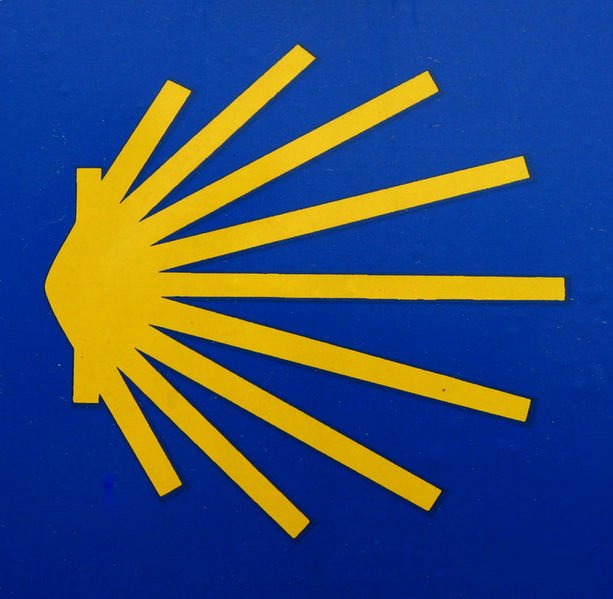Rituals--A Little Santiago History
I admit I´ve been lax in giving you Texans a sense of the actual spectacle afforded the pilgrim in the city. First, many of you know that the Compostella pilgrims are "Concheiros"--we even enter the city on a street so named. The reason, of course, is that every pilgrim walked with the sign of the Compostella pilgrimage--a round, flat sea shell ("concho" in Spanish). Not only is St. James reouted to have arrived by sea, but also, according to some legends, he carried such a shell and used it as a plate. Medieval pilgrims would beg for food using the shell. Additionally, they hoped that carrying the shell would ward off robbers who would be reluctant to steal from a person on a mission from God (okay, I borrowed that last phrase from the "Blues Brothers" movie). You Chaucerians will remember from the Prologue to the Canterbury Tales that Chaucer calls attention to the "palmeres"--those pilgrims to Jerusalem who carried the palm branch or wore little palm leaves on their clothing. The Compostella shell is a similar signifier. Entering the old city, you walk past the monastery of San Pedro de Fora--in the Middle Ages it was actually a pilgrim hospital (much needed). The Cathedral itself is a church within a church. The Romanesque building was erected in the latter half of the 12th century with Maestro Mateo overseeing the four entrance doors and their famous statuary. The church that Chaucer´s Wife of Bath (a fictional character who is supposed to have visited Compostella) or Margery Kempe (a medieval English woman who narrated her biography) visited would have had one tall, square tower, and one shorter one. Early in the 17th century, there was concern that Mateo´s treasures were being destroyed by the elements; plus, artistic tastes and expectations of grandeur had changed, so they built a shell around the original cathedral. Today, three of Mateo´s doors are recessed within an ornate, Baroque facade. The towers have been extended to be equal in height and are covered with similar ornamentation typical of the Baroque period. The Wife of Bath probably wouldn´t have recognized the place from the outside.
There are lots of traditions about being in the church itself. Pilgrims are supposed to place their hands on the pillar of St. James at the south door and make a wish. They rap their heads on a statue of Maestro Mateo in hopes of being similarly inspired. Then you walk behind the great alter and place your hands around the neck of St. James figure that stands just above the vault holding his remains. Pilgrims are supposed to whisper a desire or need or utter the reason that brought them to Compostella. So much for personal rites. At the pilgrim mass, the Botufumerio is the ultimate moment of spectacle. The world´s largest censor, the Botufumerio is filled with incense. At the conclusion of the mass, eight priests lower this huge, silver censor, light the incense, and begin swinging it back and forth across the great trancept of the building. I can only say that it´s amazing--this great smoking thing being hauled back and forth in a great arc just above people´s heads. This tradition began in the Middle Ages as a way to lessen the stench of we stinky pilgrims--many of whom had failed to properly wash in Rio Lavacola.
Well, today I visited Pardón, the place where James´s boat is supposed to have landed. The church there still has an L-shaped stone at the alter that is reputed to be the very landing place of James´s remains. Pardón might have been the center of Jamesian veneration, but a bishop ordered the remains transferred to Compostella in the 1040s. The priests of Pardón have jealously held on to the landing stone. Tomorrow, I´ll either go to Finisterre or to A Coruña--and visit a couple of last churches here in Compostella. Then, London on Thursday. I can just about taste the home-cookin´ now.


0 Comments:
Post a Comment
<< Home